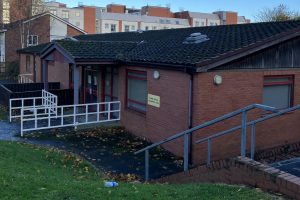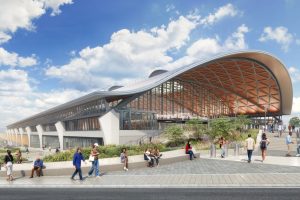My Favourite Building – Fort Dunlop

MICHAEL Jones, (below) lead partner in the Birmingham office of building consultancy Powell Williams, discusses the rejuvenation of the former tyre factory by Urban Splash for ‘My Favourite Building’.
If you would like to take part in ‘My Favourite Building’, please email tamlyn.jones@thebusinessdesk.com.
Designed by Sidney Stott and WW Gibbings, the original building was constructed during the First World War and opened in 1917.
The refurbishment and contemporary additions were made by Manchester-based developer Urban Splash between 2004 and 2006.
Fort Dunlop started life as the main factory and headquarters of Dunlop Rubber in the Erdington district of Birmingham, five miles outside the city.
When it opened, Dunlop Rubber became the world’s biggest factory and accommodated thousands of workers at its height and was known as Tyre Town.
The factory itself closed in 1980 and the building stood virtually empty for more than 20 years.
Verging on derelict, with its main occupation as an advertising hoarding for cars flying down the nearby M6, the site was purchased and redeveloped by Urban Splash.
The developer transformed the building into a 350,000 sq ft complex containing offices, shops, a 100-bedroom hotel and bars, and relaunched Dunlop Rubber as Fort Dunlop towards the end of 2006.

The modern additions were also in steel frame and concrete clad, although this time with much of the structure prepared off site.
One main feature is a circular light well above the main reception which creates a view through all seven storeys to the roof which, combined with a number of internal glass walls, allows the majority of the internal space to be illuminated with natural light.
The light well is lined with steel, a nice reminder of the building’s industrial heritage alongside the contemporary new interior.
And in contrast to the angles and edges of the building itself, is the delightful rooftop garden, one of the largest of its kind in the world.
Fort Dunlop is an iconic building, representing more than a simple commercial property development.
In terms of the history and regeneration of Birmingham, it is a symbol both of the region’s manufacturing heyday and its contemporary renaissance.
Standing derelict for all of my early adult years, it was a great day when the building was purchased and completely refurbished into what it is today. Now Grade I listed, it is essentially a business park in one building, containing offices, retail and a hotel.
I particularly like the care with which the developer has sought to retain the original aura of the building, while accepting it is necessary to update and extend in order to make the scheme both vibrant and viable.
The building looks particularly impressive and almost welcoming as drivers pass it on the M6 at night, with the profile of the building enhanced by the cleverly designed internal and external lighting treatment.
Now a modern and functional space, the utilitarian feel is reminiscent of the region’s industrial heritage and the hugely important part that the area once played in the country’s manufacturing industry.
The West Midlands is rightly proud of its manufacturing heritage and Fort Dunlop serves as a constant reminder of those glorious days and a fitting tribute to a prosperous future.
Advertise your business with TheBusinessDesk.com’s weekly Property Email. Learn more from Lee-J Walker on 07807 083544 or email him at leej.walker@thebusinessdesk.com









